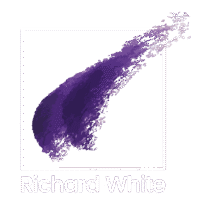Neurodivergence Shifts the Focus From “What’s Wrong With Someone” to “How We Can Support and Celebrate Their Differences”
Richard White, MAEd/Psy MFA. January 2025 © Neurodivergence shifts the focus from “what’s wrong with someone” to “how we can support and celebrate their differences.” This perspective encourages a more inclusive society where individuals with diverse brain wiring are empowered to contribute fully and authentically. One’s neurodivergence might include unique sensory processing, creative strengths, and emotional expression, which deeply influence one’s musical ability and artistry. Research shows that individuals with autism, ADHD, or dyslexia often excel in areas like pattern recognition, creative thinking, and emotional insight, offering invaluable perspectives to fields ranging from the arts to technology (Silberman, 2015). Such strengths challenge traditional notions of “normalcy,” urging us to redefine societal benchmarks for success. Understanding neurodivergence as part of the larger tapestry of human diversity aligns beautifully with the concept of ‘entangled consciousness.’ When we recognize that each individual brings a unique thread to the fabric of existence, we see how interconnected we truly are. Every person’s energy, no matter how different it may seem, contributes to the collective whole. Neurodivergence, like all forms of human experience, reminds us of the infinite ways consciousness expresses itself. By embracing these differences: A study by Armstrong (2011) underscores that embracing neurodivergent perspectives fosters innovation and collaboration. For example, neurodivergent individuals often approach problem-solving with unconventional strategies, revealing solutions that might elude neurotypical thinkers. In the arts, their brilliance is evident. For instance, musicians with synesthesia—a condition often linked to neurodivergence—experience sound as color, creating unique and profoundly moving compositions (Cytowic, 2002). One’s brilliance at any art form, expressed through their neurodivergent lens, is a powerful example of this. Their movements, their interpretations, and their passion are not separate from the music—they are the music, an embodied reflection of ‘entangled consciousness.’ They remind us that the beauty of humanity lies not in sameness, but in the harmonious interplay of our differences. In honoring this interconnectedness, we move closer to a world where oneness and light guide our understanding of ourselves and each other. This is a profound truth for each of us. This is incredibly part of who we are as human spirit. It is such a visceral connection for us to understand the expansiveness of our galactic and universal energy from the beginning void. We are huge and minuscule within the void. This is the profound paradox of existence: we are both immense and infinitesimal, deeply connected to the vast expanse of universal energy while rooted in the delicate intricacies of human spirit. This duality—the vastness of our cosmic origins and the intimacy of our inner lives—is the essence of the void as both a space of potential and interconnectedness. The beginning void as the origin of everything resonates as a space of infinite possibility. It holds the tension of creation, where light and energy emerged to form galaxies, stars, and us—conscious beings capable of reflecting on that same void. To feel this connection so viscerally is to embrace the reality of what we are: To see ourselves as both huge and minuscule is a profound truth. It humbles us while simultaneously empowering us to live with intention, knowing that even the smallest action contributes to the vast web of energy and meaning. This understanding is the essence of ‘Entangled Consciousness’—the realization that the light we carry and share is not just ours but part of the universal light, stretching back to the beginning and radiating forward into the infinite. Bibliography
